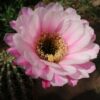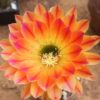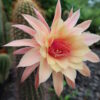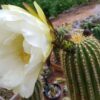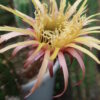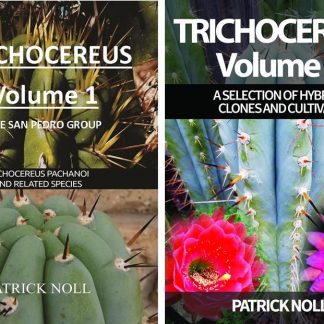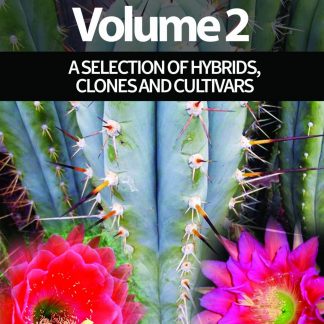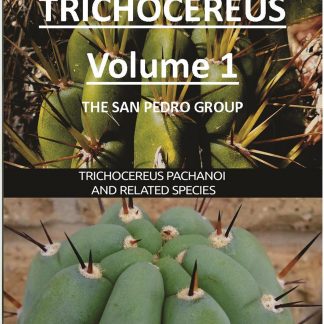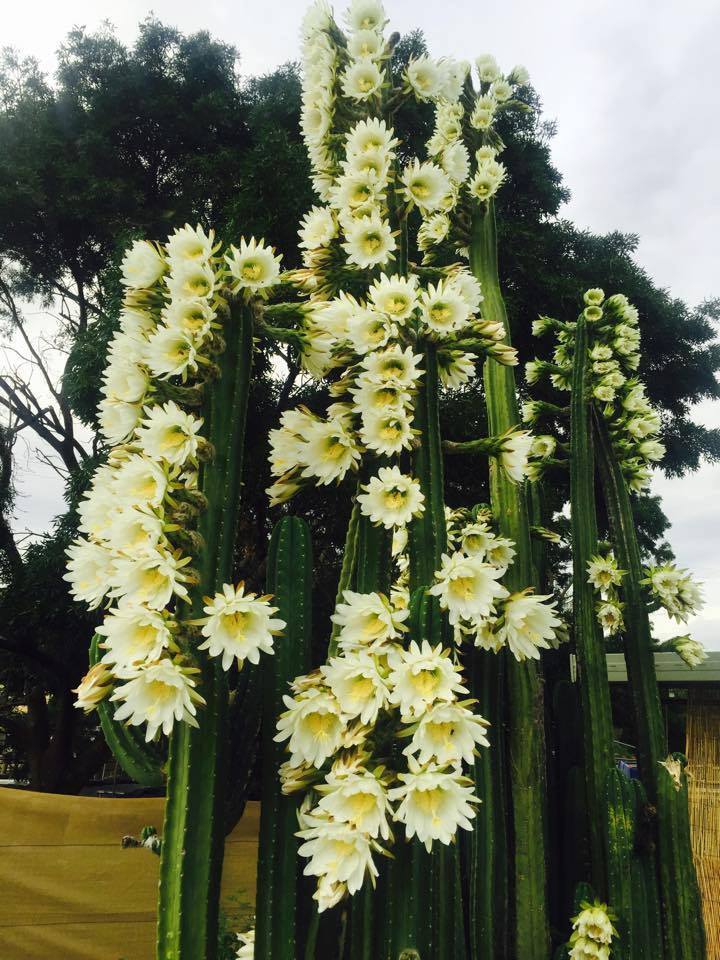
I wanted to clarify some things about the PC Trichocereus clone and the differences to classic Trichocereus pachanoi. What it is, where it probably is from and what it isnt. The name is one of the most overused names in the history of Trichocereus culture. I personally hate it and spent days discussing the whole situation with friends or interested people in the Trichocereus Facebook group. If you hear the word PC in a Trichocereus group, JUST RUN. Log off, go outside and be in your garden. Still, if you actually wonder what those guys are actually talking about, I am happy to shed some light on this issue. Please keep in mind that I hate to use the name of this cultivar, strain or whatever you might want to call it and I will only mention this one time and one time only.
What does PC Trichocereus stands for? It originally means PREDOMINATE CULTIVAR. However, PREDOMINANT CULTIVAR would probably be more appropriate.

Photo: moonunitbotanica.com / PC Trichocereus in Australia
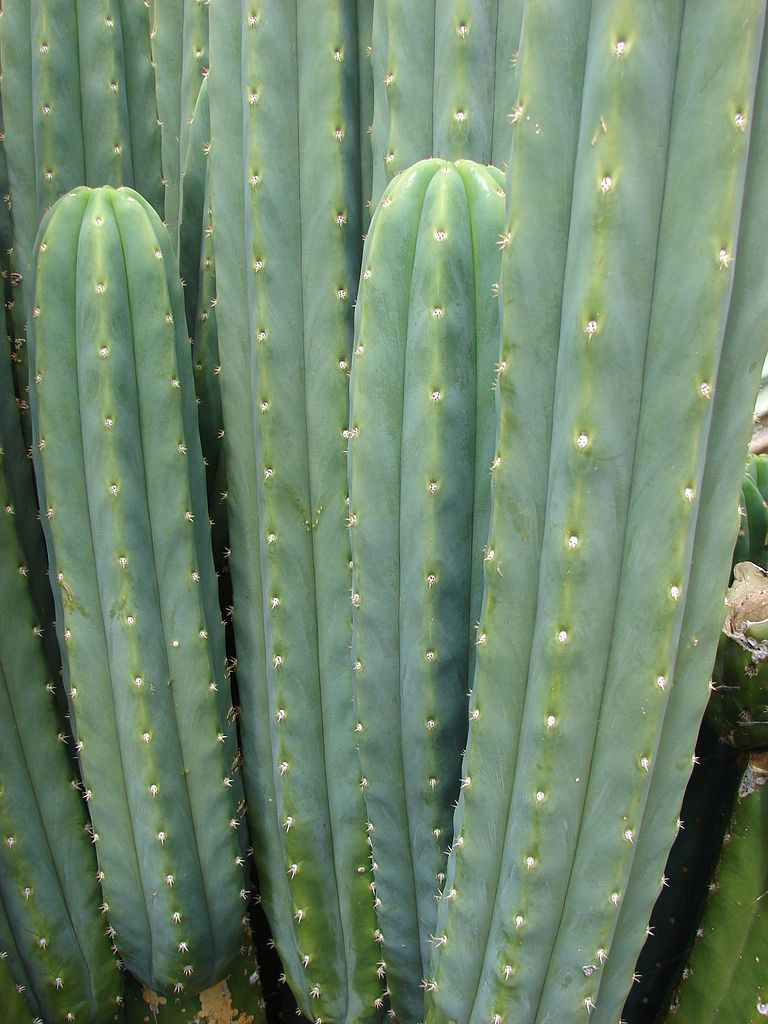
PC Trichocereus in a garden. Photo: Forest & Kim Starr
Now what is it really and is this all BS?
No one knows for sure and DNA testing needs to be done. That´s pretty much my main argument and people love to misinterpret this article. PC Trichocereus pachanoi (sic) is a clone, but there also are other plants grown from seeds that are probably coming from the same site this clone is coming from too. In California and parts of the USA, this clone is really common around parks, schools or gardens. The exact origin of PC Pachanoi (like many call it) is unclear. However, it is very similar to a collection made by Friedrich Ritter, which he later described as Trichocereus riomizquensis. Since there are so few photos available this will be hard to verify. In my opinion the PC Trichocereus clone needs DNA testing and everything else is speculation. Personally, I don´t give a shit. This is not my clone, and I did not have any connection with the naming of it. The person who somewhat described it was Michael S. Smith on the SAB forum. His opinion about PC was that it was VERY similar to Ritter´s population from Rio Mizque and the seed grown plants from NMCR. The photos of those can be find on SAB, so make sure to check them out. If he still thinks that I do not know.
Two things are certain about PC Trichocereus. One, it is VERY similar to spineless or short spine versions of Trichocereus bridgesii. Two, it is so different from actual Trichocereus pachanoi that every Noob can easily identify it after a few months of reading. There must be a reason for the fact that it is so different to classic Trichocereus pachanoi. Whether it is a hybrid or a short spined form of Trichocereus bridgesii is impossible to verify without DNA testing. And one thing should be clear by now; I the author don´t care enough to investigate. Anyone that wants to jump face forward into the subject and fund a DNA test be my guest. More power to you my friend. Just know that the discussion around this clone will always be on Kindergarten level, no matter what the outcome is. It is the Trichocereus version of “but her emails”. Facts or actual knowledge do not matter and too many people who have no experience with the lesser known Trichocereus species love to shout their opinion at anyone that doesn’t agree.
Now that we got that out of the way, here are some more infos and a more thorough description of PC and similar plants.
Trichocereus riomizqzensis FR865
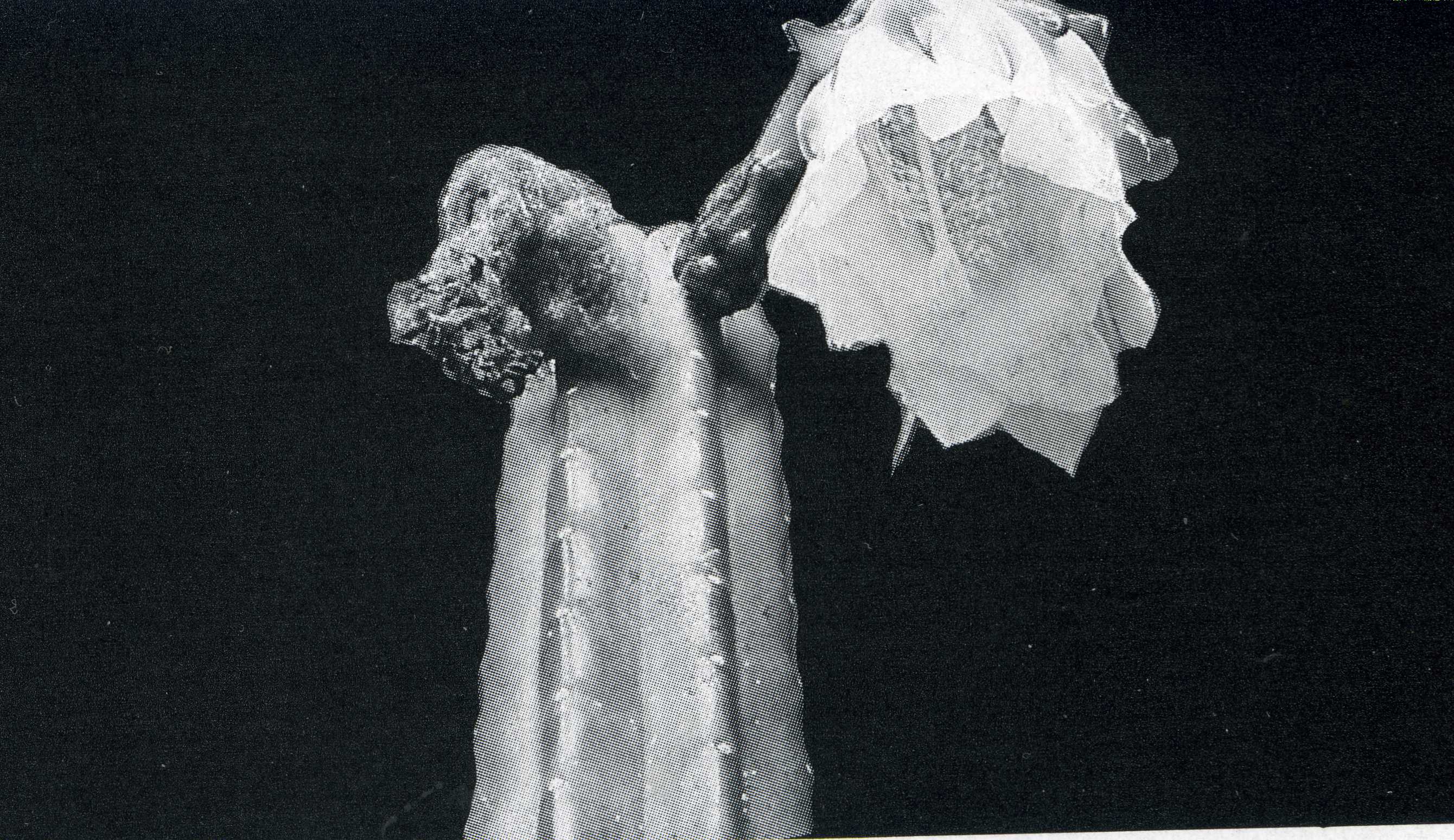
This is the original photo from Ritter´s book. Do you see the white hairs on the flower and the way the areoles look? Like, the sawtooth ribs and the absent spines? Well, keep in mind. You will need it later. Ritters official collection name of this plant was Trichocereus riomizquensis FR856 and they originally comes from Chyllas. Again, there is no way of knowing for sure, but PC and Ritter´s Trichocereus riomizquensis are very similar. Please don´t use Sacred Succulents pics for making the argument that they look different because there are also Trichocereus bridgesii growing at the whole area and it is very likely that at least some of the plants collected back then actually fall into Trichocereus bridgesii. Ritter´s plant was almost spineless and the newer Sacred Succulents plants are a lot spinier. This species simply needs DNA testing to establish a baseline and find out if Trichocereus riomizquensis isn´t actually just a form of Trichocereus bridgesii. Since there are many spineless versions of Trichocereus bridgesii, this might very well be the case.
The original site is the Rio Mizque and we and my friends from Sacred Succulents visited the original site a couple of times. It is extremely similar to Trichocereus pachanoi, but differs in substantial points like the hairs on the flowers and the overall rib structure. Though it is common belief that the San Pedro cactus aka Trichocereus pachanoi grows in Bolivia, all the San Pedro related plants we ever came across IN THE WILD either belonged to Trichocereus bridgesii or Trichocereus scopulicola. That also applies to the regional type from the Rio Mizque. I have all kinds of photos of those plants on the pages about Trichocereus riomizquensis and I don´t want to repeat this information here again.
This is a long-spined version of this but there also are a lot of short-spined ones on that site. I seen them. Just like this PC Trichocereus, they have 6-7 ribs, those weird areoles and golden spines without swollen spine bases. Overall, they are just a short-spined version of Trichocereus bridgesii. In addition to the short spined versions, there are also MANY versions with longer spines at this site and they are basically indistinguishable from Trichocereus bridgesii. In my opinion they probably ARE Trichocereus bridgesii varieties. People often like to compare the Ritter clone FR865 (look at the photos again) to spiny Trichocereus bridgesii that Sacred Succulents collected and labeled Trichocereus bridgesii during their field trip. Again, some of those probably were treated as local populations of Trichocereus bridgesii, so it´s kinda unfair to make a comparison between the spineless plant that was originally described as Trichocereus riomizquensis to basically a random local population of Trichocereus bridgesii. All of these plants CLEARLY belong to Trichocereus bridgesii in the greater context (even the spineless collection), but Ritter´s plant was clearly not the same clone or type of plant as the spiny Bridgesoids that also grow in that area. That plant is clearly photographed in his original photo, and the fact that it looks nothing like some of the spiny collections from the area should instantly end all comparisons. There are spineless AND spiny versions of Trichocereus peruvianus, so it shouldn´t come as a surprise that it might be similar with Trichocereus riomizquensis.
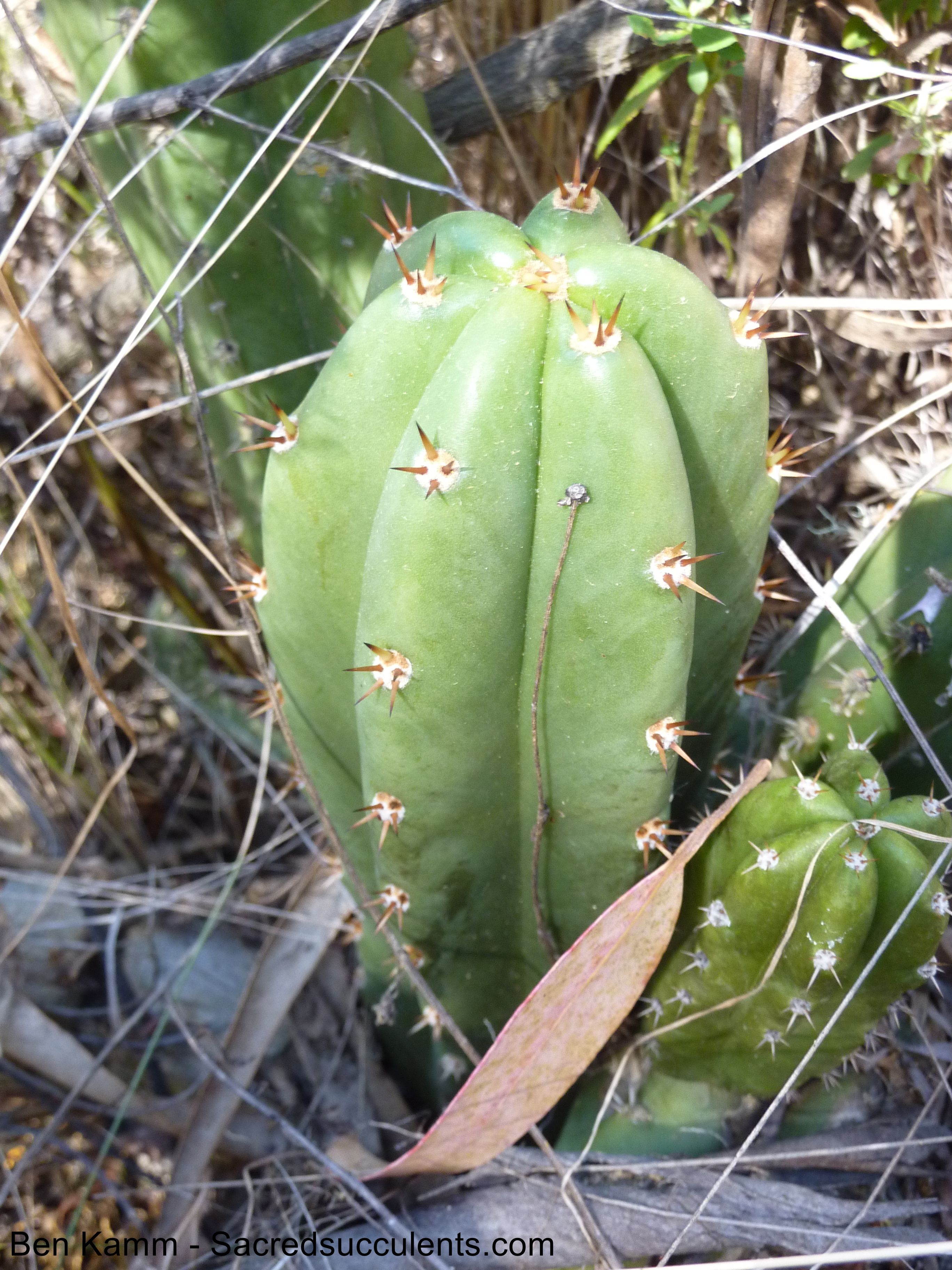
Drought Resistance and Hardiness
Let me just say that one thing that all Bolivian Trichocereus species have in common is their drought resistance. They literally live in a hot desert and are a lot more resistant to drought than Trichocereus pachanoi or some of the other Peruvian San Pedros. And that’s where I want to draw the line directly to this Californian clone. Clones & cultivars are not humbug or bullshit….cultivars exist in EVERY field of commercial cultivation and everyone who tells you different is a fool. One such cultivar is the infamous PREDOMINANT CULTIVAR, which is extremely drought resistant and manages to thrive in the California climate too. This clone is so present in that area that it´s probably the most common Trichocereus. We tested it numerous times…almost none of those Californian plants were able to mate with each other…simply because they were genetically identical and cuttings of each other. I seen whole nurseries filled up with PC because they are so damn easy to grow. They just cut them in small pieces and stick them into the ground. And after five years, they sell it for 30-100 bucks. All those plants share the same flower characteristics and are closer to Trichocereus bridgesii than they are to Trichocereus pachanoi. They are covered with white hairs, which is absolutely typical for Trichocereus bridgesii. I know a Bolivian Trichocereus species when I see one…and this Trichocereus PC is one without a doubt.
The flowers of PC Trichocereus:

Do you see all those white hairs? Good, because it’s important to differentiate between certain Trichocereus species. Trichocereus pachanoi tends to have black or brown hairs, while this one has whitish hairs on top of a black or brown base. And that’s typical for some Bolivian San Pedro strains, e.g Trichocereus scopulicola.
One common argument that I often hear from people with an agenda is that the white hairs on PC Trichocereus and Trichocereus scopulicola are just white because they are stained by the sun. I find that argument insulting, simply because there are so many photos that prove that there is a visible tendency for whiter(!) hairs on some Bolivian species when the buds/flowers are originally formed. OF COURSE THE SUN BLEACHES THE HAIRS ON THE FLOWERS OF ALL TRICHOCEREUS SPECIES. The sun bleaches everything including the hairs of all living things if you expose them to it, but it should be pretty obvious that there are wild differences in hair coloration in the genus Trichocereus when they are originally formed. Later on, the hair color of all species is under constant attack by the strong sunlight and bleached until only the brown or black wool below remains. Most of these flowers have hairs and wool (usually around the scales on the flowers), and both are two different things. If you look at the photos it becomes clear that there´s brown wool coming out in between the scales (only a few mm long) of both PC and Trichocereus scopulicola, and the substantially longer whitish hairs (up to a couple cm long).
Ritter wrote in his book that Trichocereus riomizquensis is closer to Trichocereus scopulicola than it is to Trichocereus bridgesii. I think this speaks volumes, and it clears up why people often have a hard time differentiating bloated Trichocereus scopulicola and PC Trichocereus.
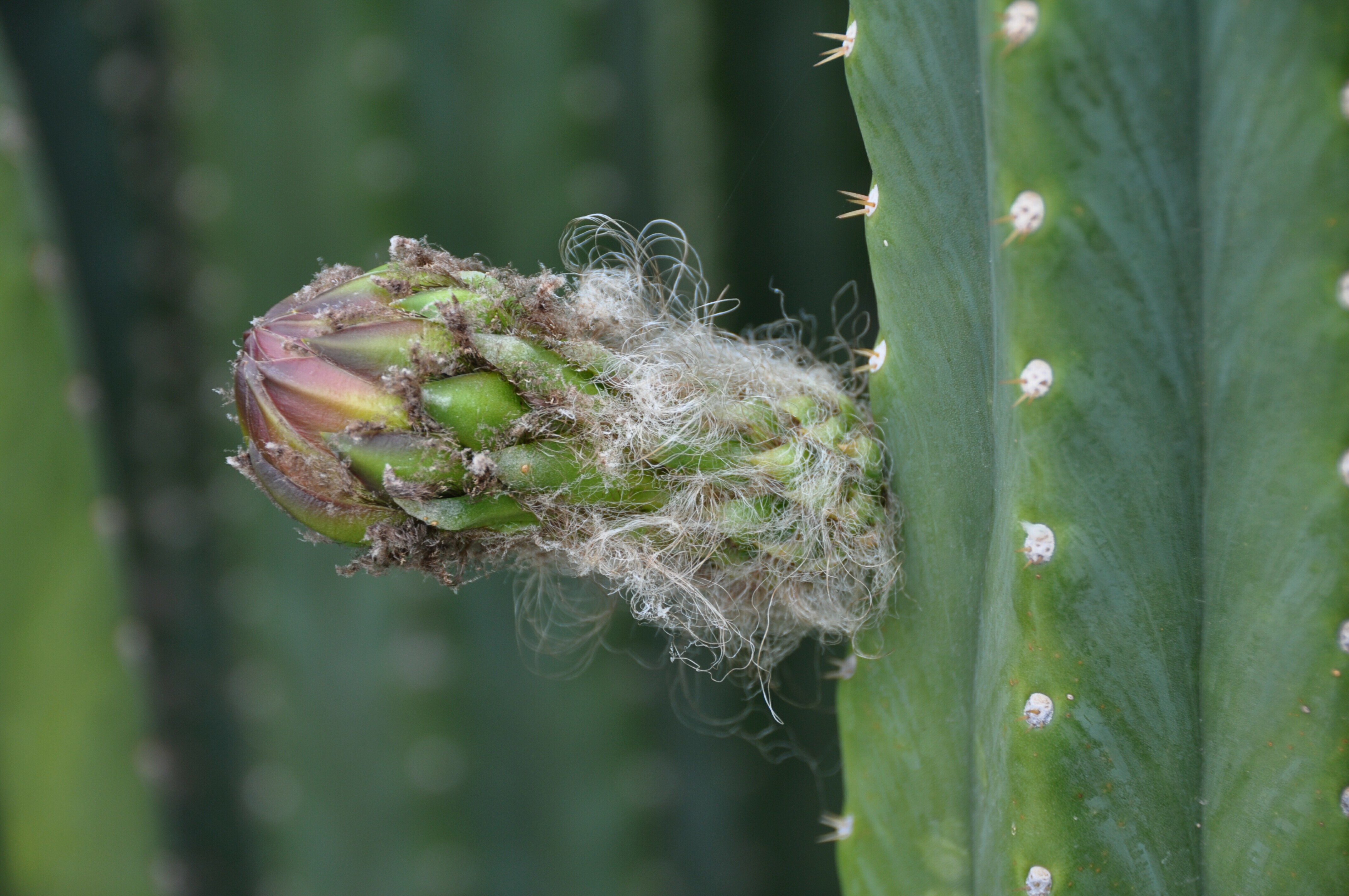
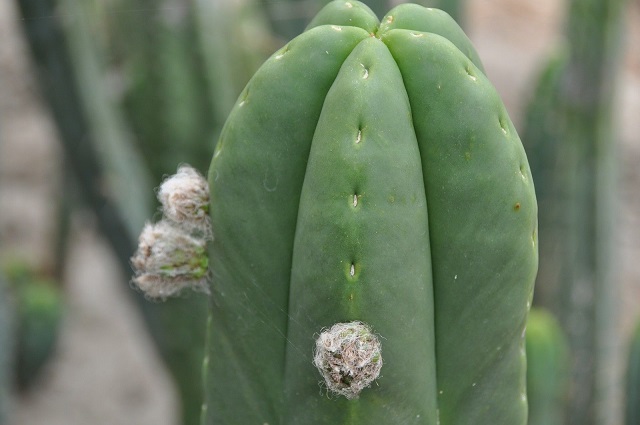
Those two photos of PC Trichocereus are from Misplant.net! Check out their seeds because they are amazing.
Well, just compare the photos and see for yourself. The top photo is the flower bud of this PC Trichocereus and the lower one is a bud on a Trichocereus scopulicola. They are at different stages in their development, but I am sure you see the similarity in the important parts. And the same applies to the flower on Trichocereus bridgesii, which is another Bolivian Trichocereus.
Scop from Misplant.net
ID Chaos on Forums and Facebook Groups
Alright, now that we have this out of the way let me just say that discussions about PC are very common on message boards and Facebook groups. Like it is with most other things in life, people who do not have enough experience just love to identify stuff even though they should probably not. PC is among the most misidentified plants on Trichocereus groups. And this is not because it is so difficult to identify. Like I said, even a noob can identify it, IF he knows what to look for. Due to the fact that people use PC for many classic Trichocereus pachanoi, there is total chaos around what actually constitutes a PC Trichocereus or not. In pretty much every ID request involving Trichocereus pachanoi, there are people that will call it a PC. If something has spines, there´s a good chance someone will label it PC. If you know what to look for, this clone is one of the easiest ones to identify though.
Is the PREDOMINANT CULTIVAR A CLONE?
Yes, but there are also people that made crosses with it and grew offspring of it. The majority of the plants in the States is clone, but I know that there´s also a lot of offspring that´s making the rounds. Misplant alone made hundreds of crosses with this clone, and I´m sure he wasn´t the only one. All cuttings taken from the main PC clone are genetically identical.
What about sister plants / seedlings grown from the same fruit?
Regardless what it is, it is very likely that there were other plants from the same population or fruit. If it is actually Ritter´s plant from Rio Mizque in Bolivia, there are probably thousands of other seedlings grown from his seeds. It doesn´t change the fact that the majority of PCs around are one clone, but it just underlines that there might be more plants from the genetic proximity. I doubt you can differentiate the actual PC from its offspring or closely related sister plants. I´ve seen lots of seedgrown PC hybrids and they pretty much looked like the famous parent. It is a very dominant clone and in almost all crosses with it the classic PC traits came through.
Short Spined Trichocereus bridgesii from Bolivia
Here are some Bolivian T.bridgesii and Trichocereus riomizquensis with very short spines. They are still part of Trichocereus bridgesii in a wider sense, but you can see that there is a clear similarity to the PREDOMINATE CULTIVAR. Same rib structure with sawtooth ribs, correct hair color, almost no spines, same skin structure, same golden spines (unlike gray or brown on T.pachanoi) etc. Imagine them with long golden spines and you have a Trichocereus bridgesii,

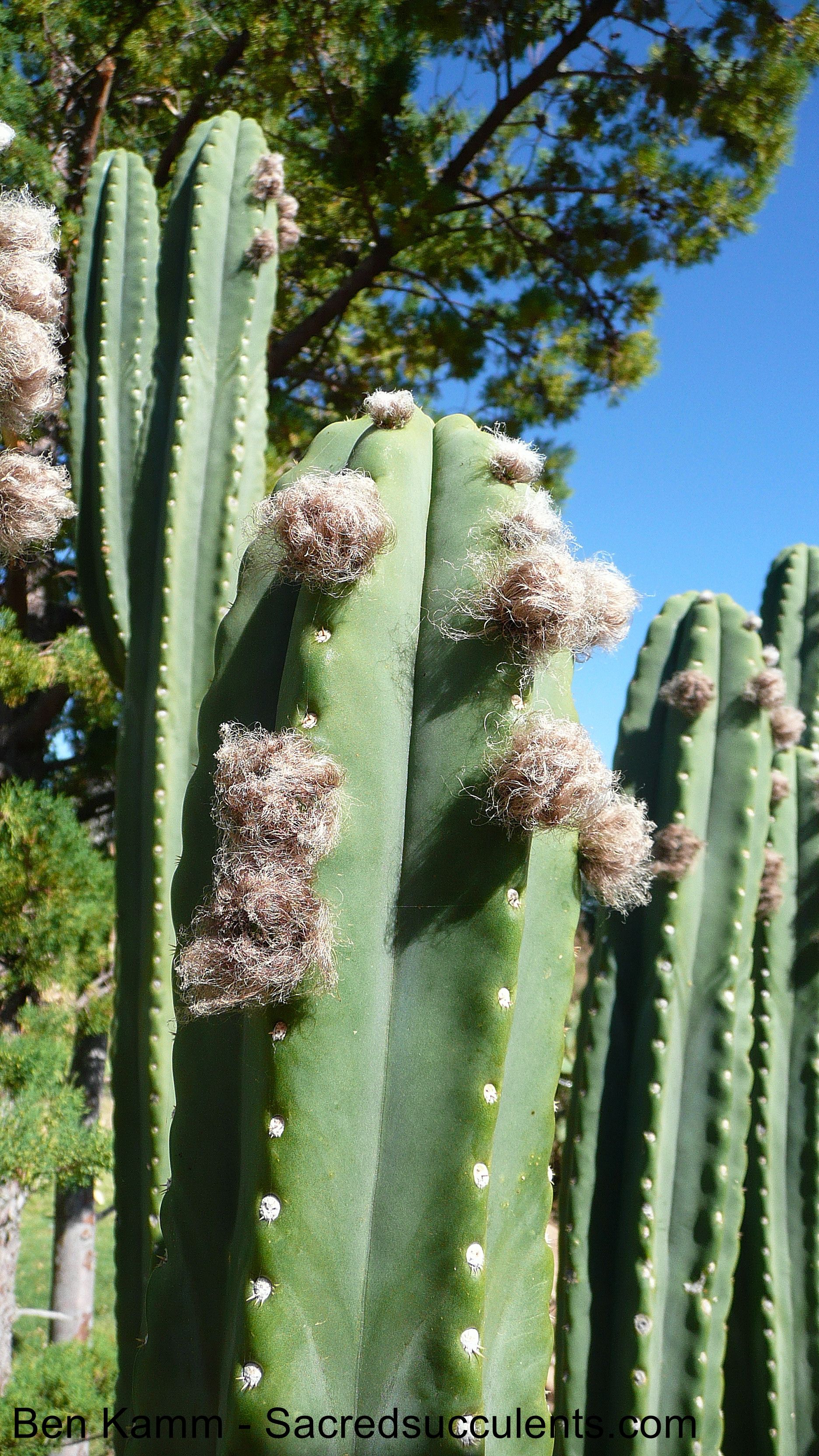

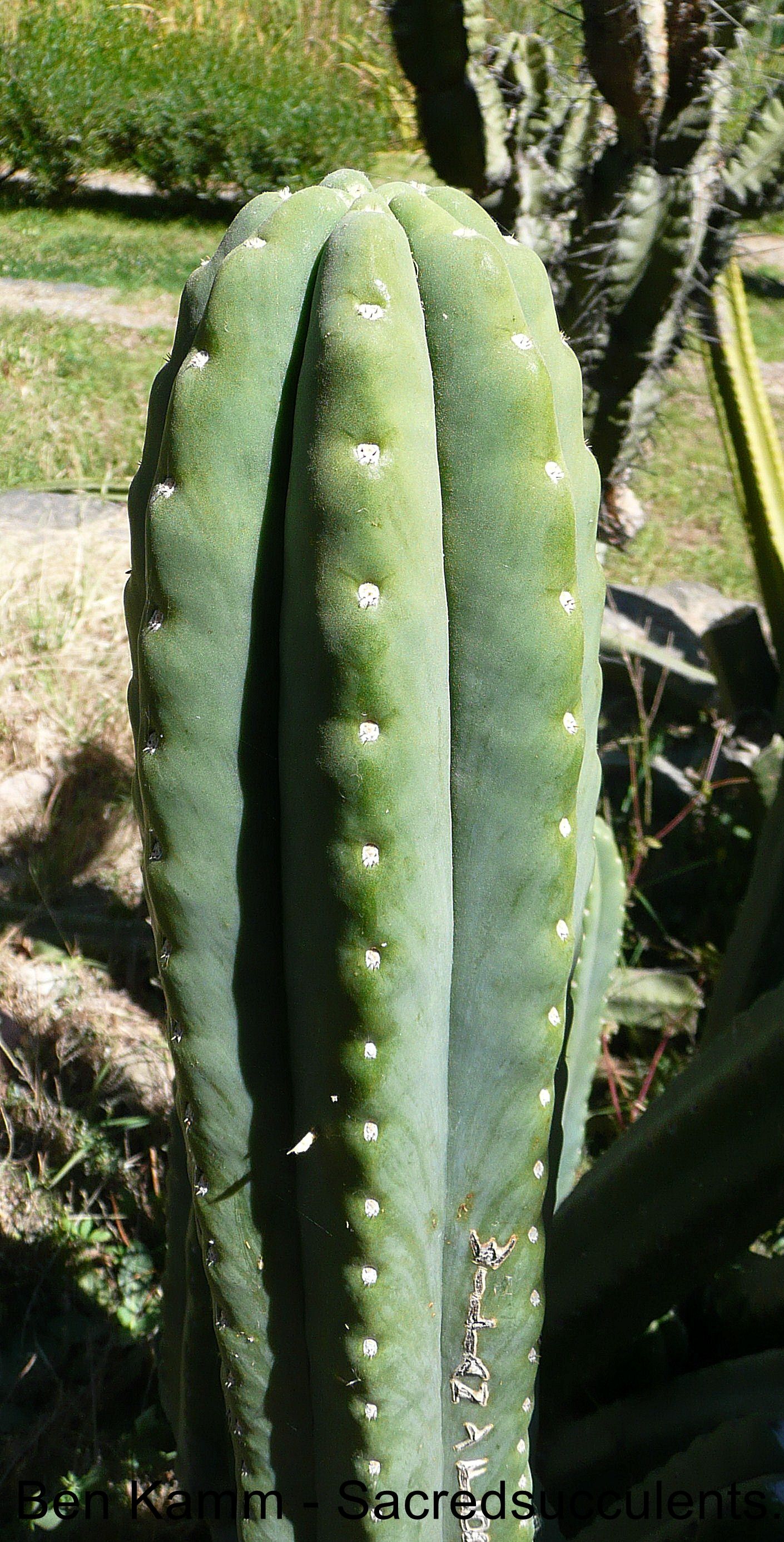
Well, okay. I want to come to and end but it´s important to make a very good point. YES, there are many San Pedros that are extremely similar to this clone. Not all of them are the same and I am sure there´s a fair amount that has absolutely nothing to do with this one. But it is absolutely proven that there IS a common clone in the USA and it is easily distinguished from typical Trichocereus pachanoi. There must be a reason for it.
Nurseries wanna make money and will replicate everything they have a market for. And those Bolivian Trichos or similar plants (as in PC ) are tough like hell. You literally stick them in the ground and they grow. And that played a part in the fact that this Trichocereus strain became wildly common in some parts of the USA.
Alright, I want to sum this up. Everyone is a bit in the right here. The way this plant is discussed recently is out of control. And some people tend to forget that there is a huge number of plants that are really similar to this PC Trichocereus…and they are coming from the habitats. In Peru, there are similar plants and I just posted the examples that you can find in Bolivia as well. But that doesn´t mean that those plants were just invented by cookoo internet theoreticians. They were collected, sold and commercially cultivated. This plant does probably NOT come from Backeberg, which is another theory that was discussed heavily.
Photos of PC Trichocereus
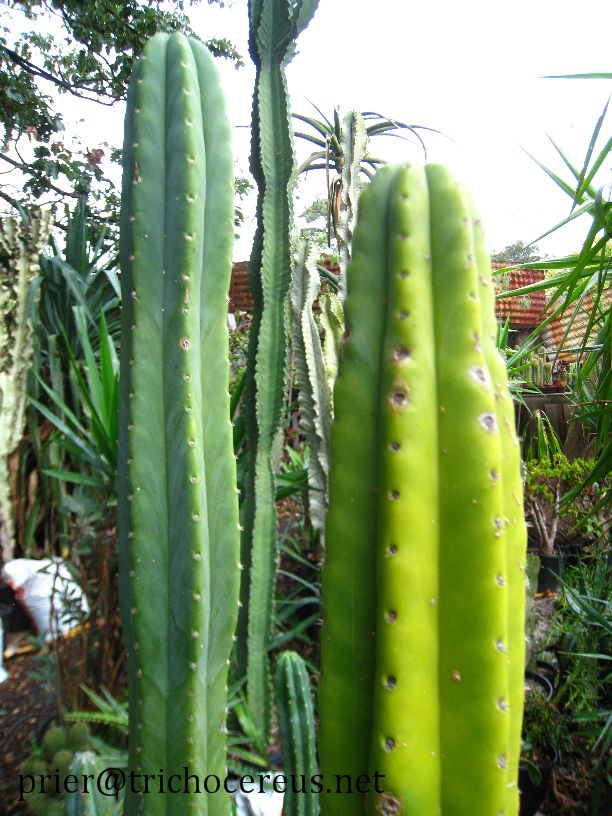


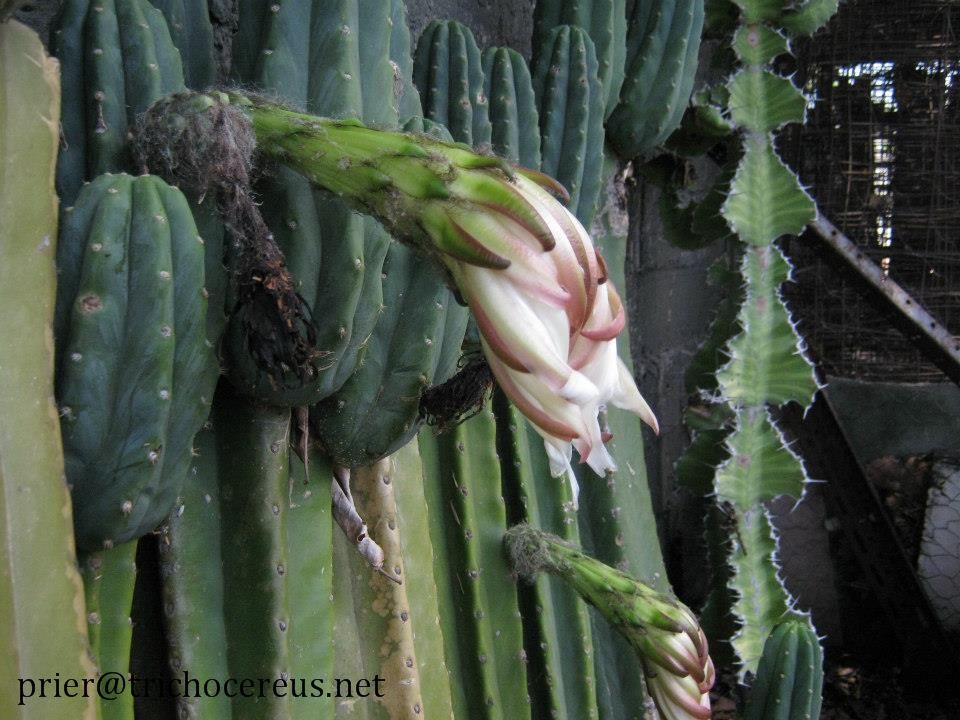
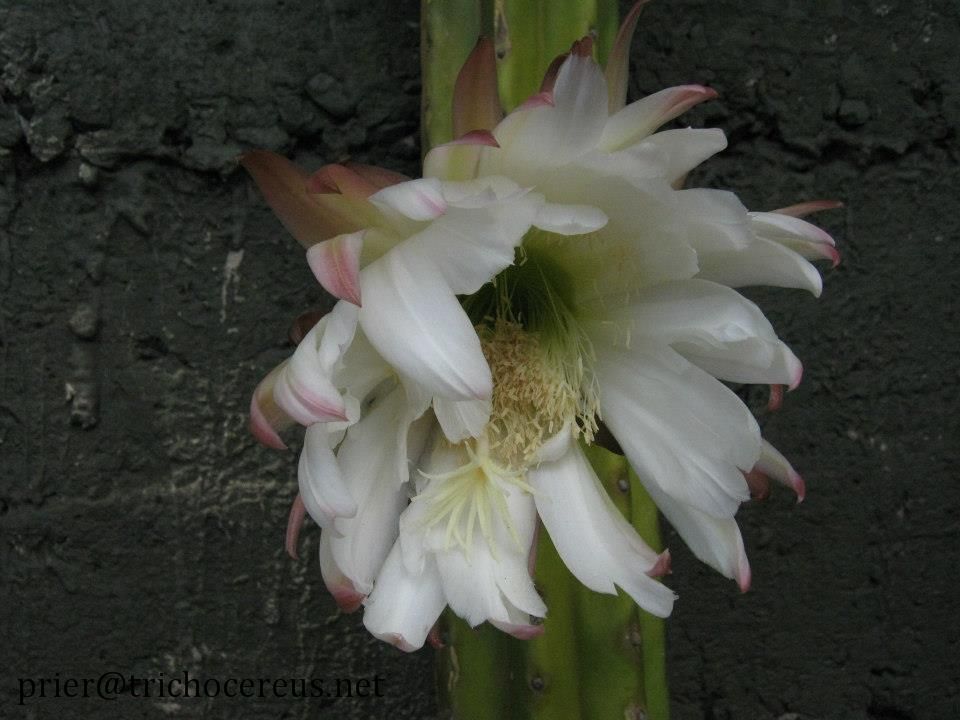

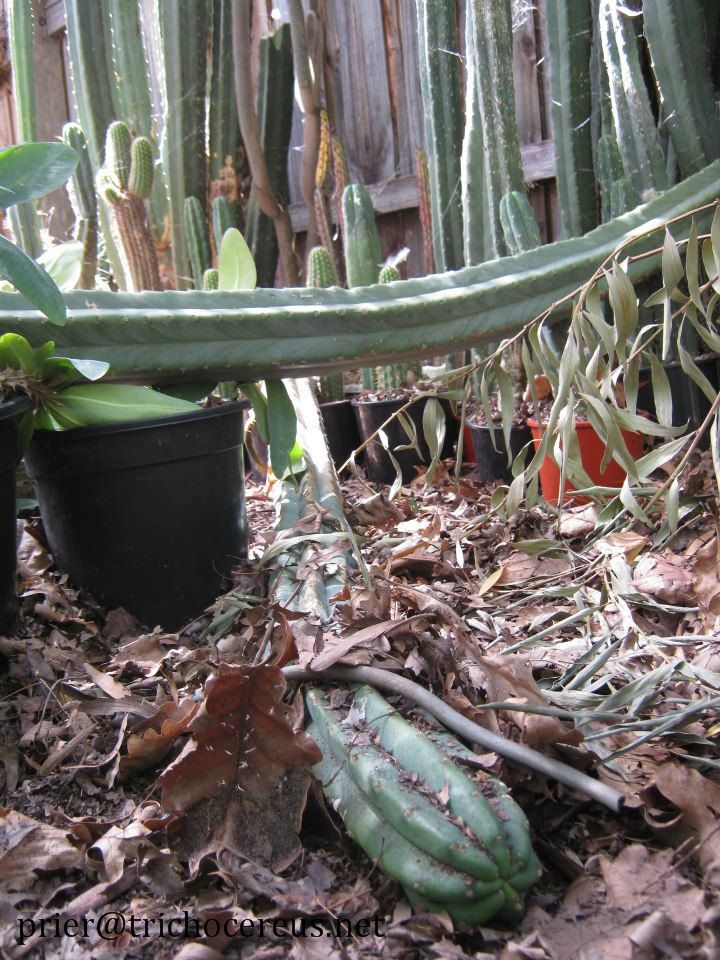
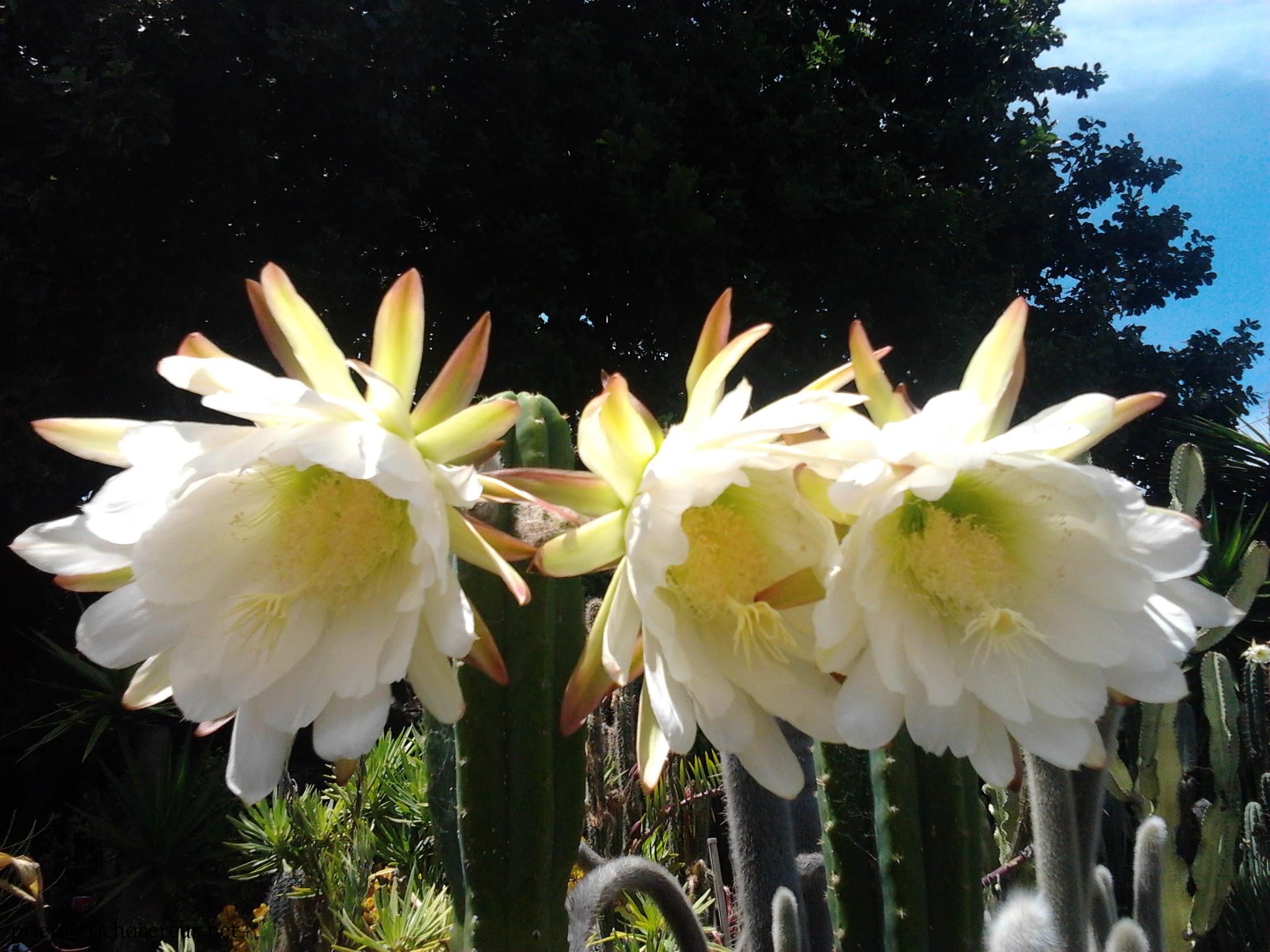
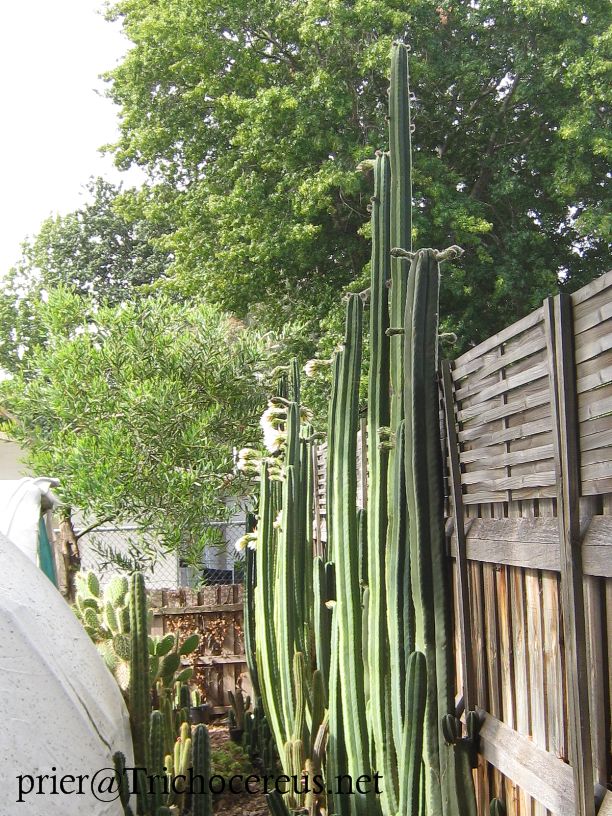
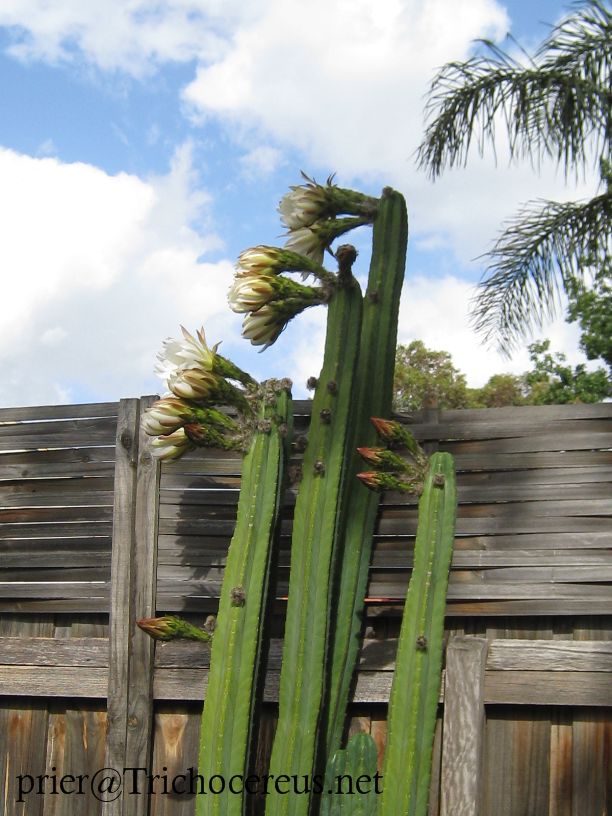
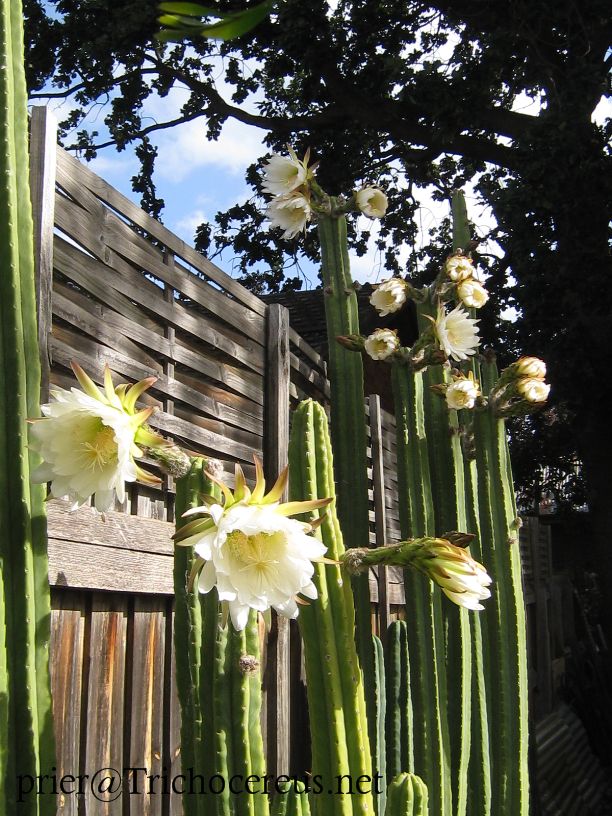


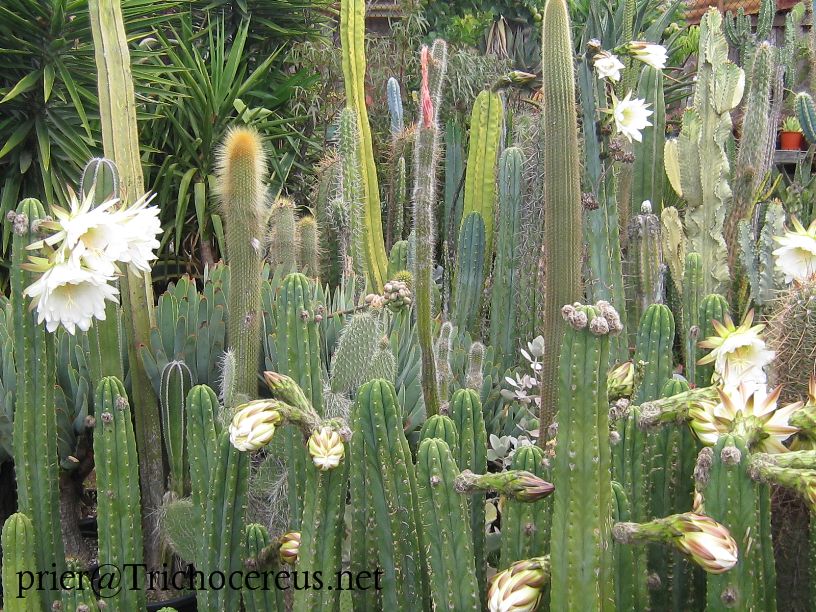
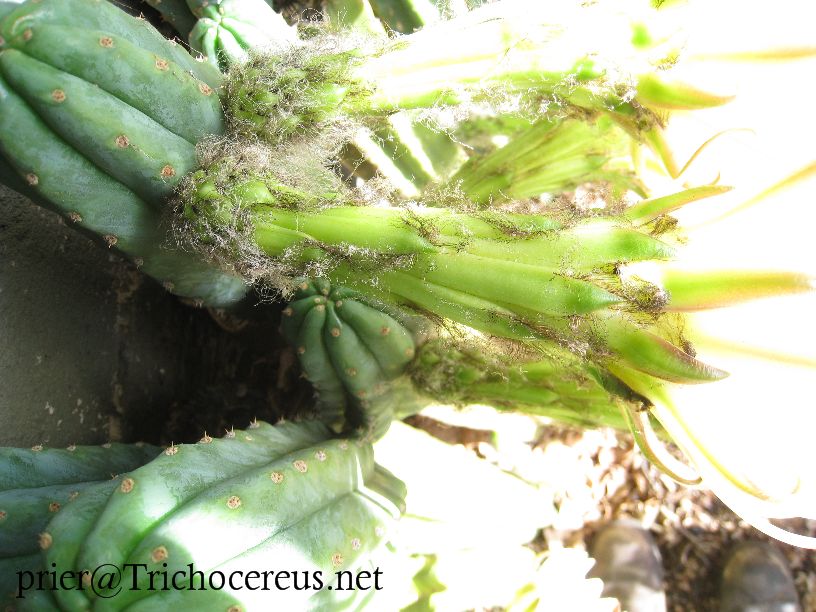
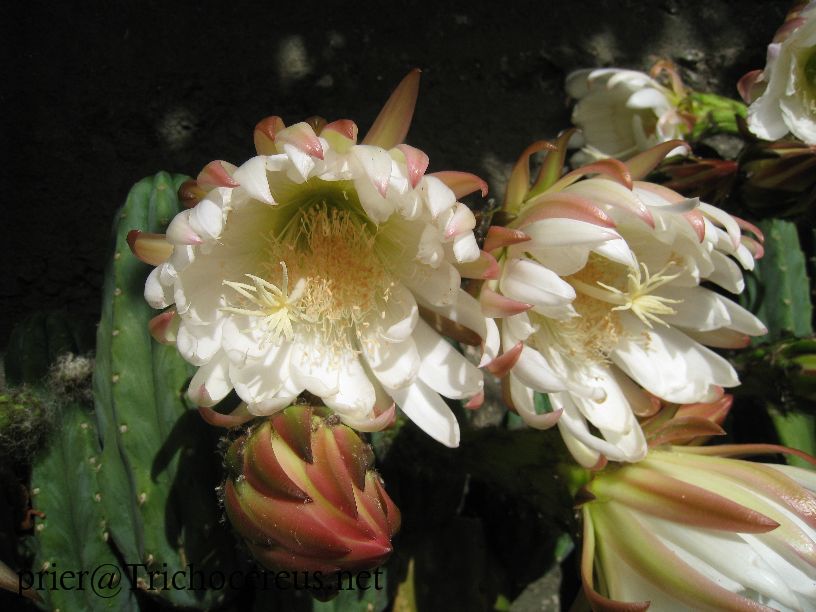
Check out our main plant database page for Trichocereus pachanoi aka Echinopsis pachanoi here:
And Trichocereus bridgesii here:
Also check out our Trichocereus Facebook group here:

